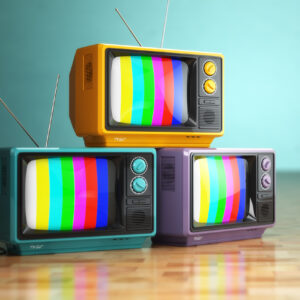While the Academy Awards recently occupied the limelight as Hollywood’s biggest night of the year, these days the small screen increasingly captures much of the attention traditionally devoted to the big screen. Keeping up with excellent TV shows could be a full-time job in itself. There were more than 1,400 different programs on primetime TV last year, ranging from “The Walking Dead” to “The Voice” to “True Detective.” And that figure doesn’t include dozens of online-only shows from Netflix, Hulu and Amazon.
Two major factors serve as the catalyst for this explosion in creativity: The first is better technology — especially growing Internet streaming capacity that makes video-on-demand practical — and the second is increasing competition between TV providers. With several traditional and online distributors to sell to, programmers are freer to experiment and churn out more shows for their diverse audiences. Unfortunately, U.S. television laws have not kept pace, and the hundreds of regulations — some dating back to the 1960s — hold back the industry and raise consumer prices.
A new chart from Media Metrics, a research project from the Mercatus Center at George Mason University, shows the Rube Goldberg-like complexity of TV regulations that cable, telecom and satellite providers must comply with to provide television service. Some laws require providers to carry certain channels and prohibit them from carrying others. The government is also deeply involved in deciding compensation rates for programming and other minutiae — like dictating that certain channels must be on the basic tier and forbidding certain satellite TV channels for recreational vehicles, based on which time zone the RV is in.
Notably, none of these apply to online video providers — yet. These laws pose a problem because they not only apply asymmetrically to competing providers, but TV regulations also tempt regulators to apply these rules to the disruptive and innovative online TV market through a piecemeal approach. Some members of Congress and FCC officials have quietly proposed regulating online video providers, but this would be a mistake.
The competitive problems in TV distribution that existed just a generation ago are rapidly fading away. Virtually no one in the United States today has just one TV provider, as was common when most TV regulations were enacted. For instance, when Congress made its last major revisions to TV laws in the early 1990s, cable TV represented over 95 percent of subscription TV. Since then, satellite TV and TV from telephone companies reduced cable’s national market share to about 53 percent.
Online video services also siphoned customers away from cable — and since 2002, cable has lost more than 15 million TV subscribers. Despite this market upheaval, legacy TV regulations remain in place, falling unequally on providers, depending on the type of distribution — cable, satellite, telephone wire or online.
This morass of TV regulations increases costs for cable and satellite customers. Despite more competition and more consumer choice, the FCC reports that the regulated expanded basic cable TV tier has increased about 6 percent per year for the past two decades, surpassing the average inflation rate of about 2 percent. Instead of trying, ineffectively, to preserve old TV business models and pacify entrenched interests, Congress and the FCC could focus their efforts on lowering regulatory barriers and promoting further competition.
Congress made the right decision in the mid-1990s to shield the Internet from FCC regulation. That policy helped protect online TV and bring about the Golden Age of Television we’re in. Incumbent operators and regulators, however, have an interest in creating a perversely level playing field — one that applies burdensome rules to all providers equally.
The success of online video illustrates that TV providers don’t require members of Congress and bureaucrats dictating how to give consumers affordable, quality TV — content creators have done that on their own. The bewildering maze of TV regulations we have today is likely doing more harm than good.

